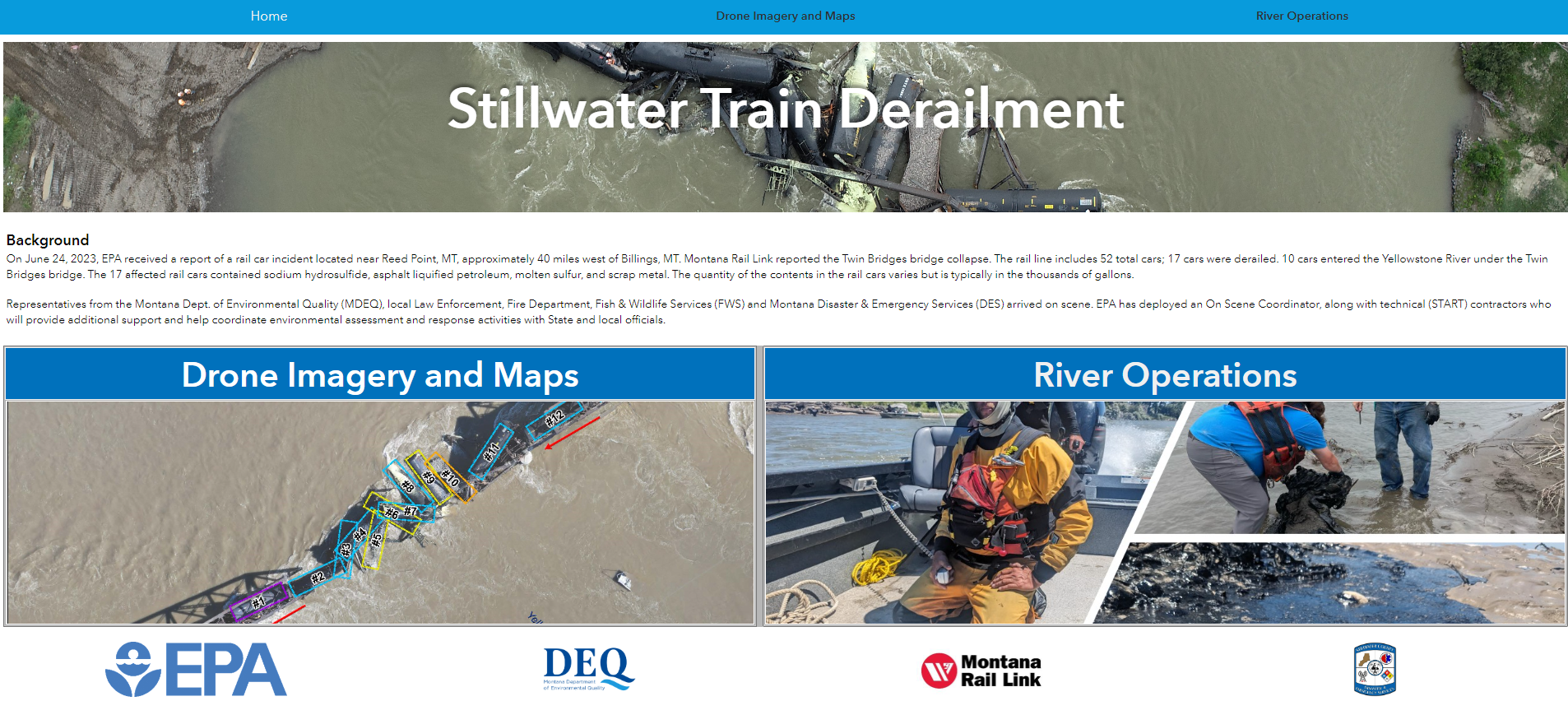
Emergency Response Complete
Unified Command completed the Phase 2 assessment on June 21,
2024. The goal of the assessment was to see if actionable asphalt would be
exposed following winter low flow and spring runoff
conditions. (Actionable asphalt was defined as deposits that are 15cm or
larger when on sand and 50cm or larger when on pebble.) The Phase 2 assessment
covered more than 60 zones over 95 river miles. While some asphalt was
observed and collected during the Phase 2 assessment, the crews did not observe
any area with significant amounts of actionable asphalt.
Based on observations during the Phase 2 assessment, Unified Command has concluded the emergency response phase is complete as of June 30, 2024. The Stillwater Train Derailment Site has transitioned to recovery. On behalf of the trustee of the state of Montana’s natural resources and the Governor, the Natural Resource Damage Program is assessing natural resource damages from the spilled asphalt.
Asphalt cleanup will be conducted by Montana Rail Link as they receive notifications of observed asphalt. To report observed actionable asphalt material in the Yellowstone River or on the riverbank, please email the GPS coordinates and any photos of the riverbank location to: rpderailment@mtrail.com.
Site Background
- On June 24, 2023, EPA received a report of a rail car incident located near Reed Point, MT, approximately 40 miles west of Billings, MT. Montana Rail Link reported the Twin Bridges bridge collapse. The rail line included 55 total cars; 17 cars were derailed. The 17 affected rail cars contained sodium hydrosulfide, asphalt liquified petroleum, molten sulfur, and scrap metal. 10 cars entered the Yellowstone River under the Twin Bridges bridge. The sodium hydrosulfide cars did not enter the river.
- Representatives from the Montana Dept. of Environmental Quality (MDEQ), local Law Enforcement, Fire Department, Fish & Wildlife Services (FWS) and Montana Disaster & Emergency Services (DES) arrived on scene. EPA deployed an On Scene Coordinator, along with technical (START) contractors who provided additional support and helped coordinate environmental assessment and response activities with State and local officials.
- Notifications to downstream public water
supplies were made. There were no known threats to public health and public water supplies monitored the situation. Irrigation ditch users were also notified.
